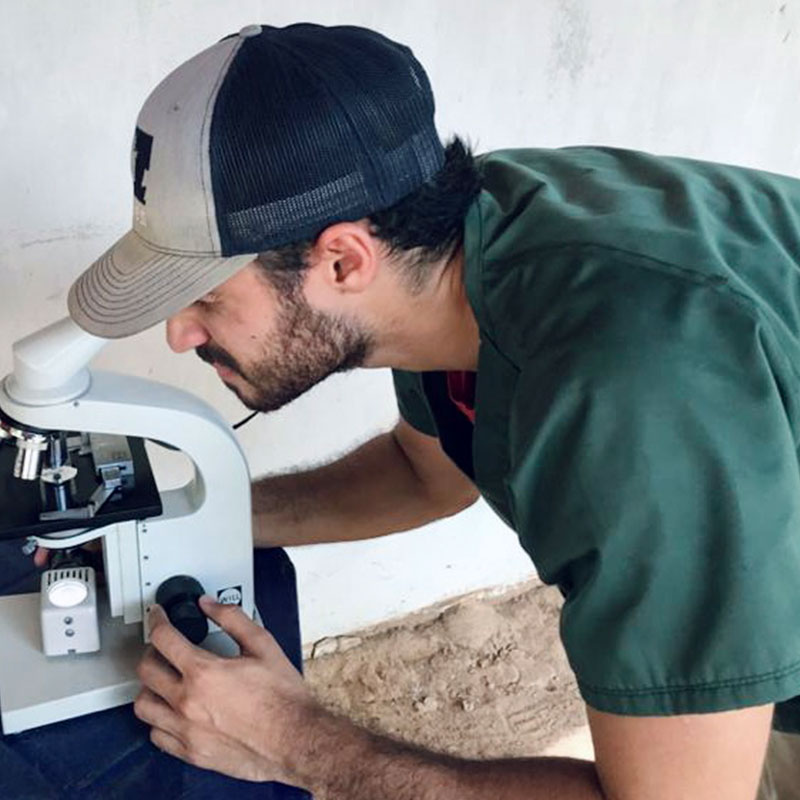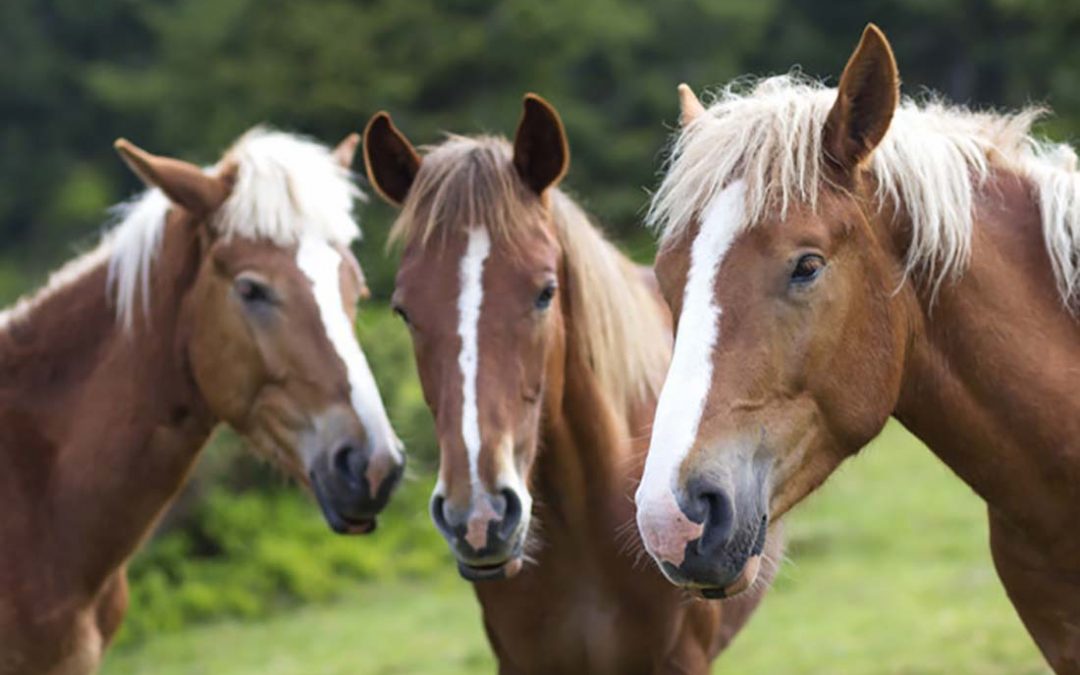When studying the reproductive behavior of a species, some fundamental guidelines must be taken into consideration, for example, knowing what the natural cycle of each species is like and what its breeding or reproduction is intended for.
On this occasion we will explain some differences in the reproductive part between two animal species, the cow (bovine) and the mare (equine), which are animals of high commercial interest. On the one hand, cattle are part of the animals that make up livestock, which is responsible for raising different species to provide food for humanity; while equines have a production purpose that is mostly sporting or entertainment, although in some countries it is produced for human consumption.
Comparing the anatomy of the reproductive system, which in both species is formed in the same way, in the sense of the structures that compose them, that is, anatomically they have two ovaries, two oviducts, two uterine horns, a uterine body, a cervix, a vagina and vulva. However there are some differences.
The ovaries of the mare are 7 to 8 cm long and 3 to 4 cm thick, while in the cow they are 3.5 to 4 cm long and about 2.5 cm wide. Another characteristic is that the mare’s ovaries have an area where the ovulation process occurs, called the “Ovulation Fossa” and in the cow this does not exist, since ovulation can occur in different parts of the ovary.
A particularity that we find in the mare is that the Corpus Luteum cannot be palpable because they are intraovarian, that is, they develop inside the ovary without leaving the surface, and in the cow this structure can be palpated. The Corpus Luteum is the structure that forms after the follicle expels the oocyte. In both species the follicle is palpable. In the mare the ovaries have a less mobile position than in the cow.
When talking about the oviducts, in the cow they are less flexuous than in the mare, and their union with the uterine horn is not as abrupt as in the horse.
The uterus in all species aims to provide an optimal environment for the embryo and is divided between the neck, body and horns. However, when comparing both reproductive tracts we can find some differences. Regarding the horns, they are located entirely in the abdominal cavity. , measure approximately 25cm, measuring in the cow about 35 to 40cm and these being sometimes and depending on the age of the animal in the pelvic area and may be in the abdominal area as well, and having a spiral handle shape, while in the mare they are moderately extended being cylindrical, and without decreasing the diameter as much as in the cow when it joins the oviduct or fallopian tubes.
The body of the uterus in mares is 18 to 20cm in length and in cows 3 to 4cm. The cervix or cervix is the part that connects the uterus with the vagina, projecting into the vaginal cavity, it is not visible externally and in the mare it can be more difficult to palpate than in the cow, even more so in estrus; In the cow the cervix is made up of three rings of connective tissue, while in the mare there are no rings and the cervix expands and contracts during estrus due to the thick layers rich in elastic fibers; The end of the cervix that protrudes into the vagina is surrounded in both species by a blind space known as the fornix. The function of the cervix is to be a barrier to protect the uterus from the outside.

As for the vagina, which is the space that goes from the cervix to the vulva, in cows it is longer (25 to 30cm), spacious and with thicker walls than in the mare, in the latter its length goes from 15 to 20cm.
After the vagina it continues with the Vestibule, in which the external urethral orifice is located in both cases. In cows the urethra is narrower and less dilatable than in the mare.
Lastly is the vulva, being the external part of the female reproductive system and is the first external barrier of the tract against foreign agents. The vulva is made up of two lips, a dorsal and a ventral commissure; In the ventral commissure when separating the lips, there will be a fossa with the clitoris, which is homologous to the glans of the penis in the male, this is more prominent in the mare than in any other species of farm animal.
The clitoris in the mare has three sinuses which are taken into account next to the fossa to perform swabs for bacteriological cultures and thus rule out infection by the bacteria Taylorella Equigenitalis, the microorganism that causes contagious equine metritis.
The mare and the cow consist of mammary glands made up of four quarters, which in the mare are grouped in pairs of two, there being two nipples, which each consist of two holes to drain the milk; The mammary gland and teats are much smaller than in the cow. In the bovine each quarter has its own nipple; The udders are supported by the mammary suspensory ligament.
The descriptions we have just made refer to the non-pregnant uterus, that is, non-pregnant.
In the cow, the bull’s ejaculation occurs in the anterior or cranial part of the vagina, and in the mare it occurs in the body of the uterus.
Before naming the type of placenta of each species, its function must be taken into account. This membrane’s function is to protect, exchange nutrients from the mother to the fetus, eliminate fetal waste and synthesize hormones and enzymes.
The placenta in the mare is of the Diffuse type, which means that the entire surface of the allanto-chorion is covered with villi and microvilli that project to the crypts of the endometrium; while the cow’s placenta is of the cotyledonary type, that is, only some parts are joined between the fetal membrane and the endometrium, forming the placentomes, which are made up of the endometrial caruncles together with the fetal cotyledons.
About the estrous cycle, which refers to the time interval between two estrus or heats, considering the ovarian, endocrine and behavioral events that occur in the female of each species, to reach ovulation.
These two species differ in their type of estrous cycle; The mare is considered to be seasonal polyestrian with long days, which means that it can present several cycles depending on the environmental season. The cow is of the continuous polyester type, that is, it should be cycling all year round without depending on the climatic season in which it is located.
This estrous cycle is divided in the cow into four phases, which are and occur in this order, proestrus (3 to 4 days), estrus (16 hours average), metaestrus (2 days, where ovulation occurs) and diestrus (15 days). Basically two phases occur in the mare, estrus (4 to 7 days, ovulation occurs) and diestrus (13 to 16 days).
Proestrus and estrus are part of the follicular ovarian phase and metaestrus and diestrus are part of the luteal ovarian phase.
Gestation in the mare lasts 335 days and the cow 280 days; On average, they can vary a few days before or after the mentioned date.
In the mare, the uterine horn where pregnancy develops may be the opposite of the ovary where ovulation occurred, but not so in the cow, where pregnancy takes place from the ovary where she ovulates.
Finally, it is important to mention that the resistance of cattle is greater than that of horses, in terms of being able to tolerate any pathology or at the time of handling. In the mare, a retained placenta is considered after 3 hours of birth, which is a clinical emergency, while in the cow it can take up to 6 hours to finish expelling the placenta and after that time it will be considered retained placenta.
Veterinarian Eduardo Prado Carroz
Follow me on Instagram as Espacio Equino


Recent Comments